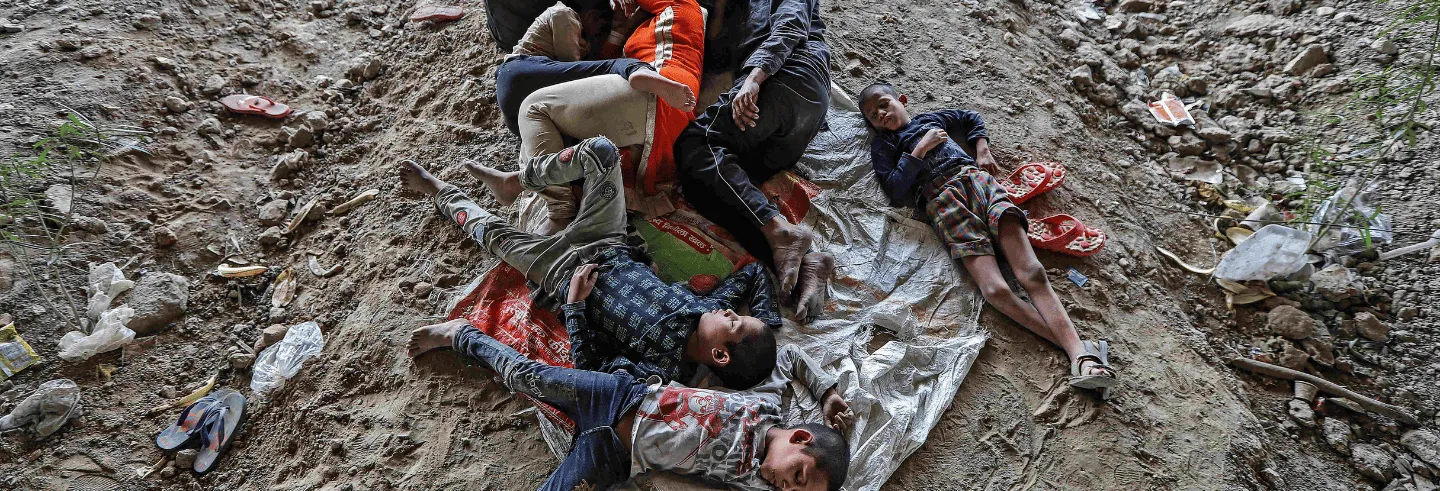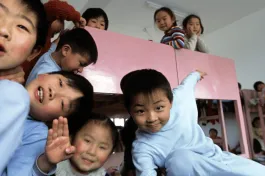India’s internal migration landscape is marked by a paradox—migrants make immense contributions to the country, yet they often face profound exclusion.
As of 2025, it is estimated that more than 600 million people—about 42% of the population—have migrated within India’s borders. This represents a substantial increase from the 450 million recorded in the 2011 Census. The rise has been driven by ongoing urbanisation, recurring agrarian crises following the pandemic, and major shifts in the labour market. Of these migrants, about 200 million were labour migrants, according to Irudaya Rajan et al. (2020). This figure excludes those who moved for marriage.
Migrant workers constitute the backbone of the nation’s economy. They power the rise of industrial clusters and urban agglomerations across many states.
Data from the mobile visitor location register (VLR) shows that migration has intensified, especially from traditional source states like Bihar and Uttar Pradesh, since the Covid-19 pandemic. VLR data estimates that nearly 11.7 million people moved out of Bihar in the four and a half years following the pandemic, a significant increase (Nizam et al. 2022).
New state-level surveys also highlight the scale of movement. The Odisha Migration Survey 2023 (OMS) estimates that 1.7 million inter-state migrants originated from Odisha. Similarly, the Jharkhand Migration Survey 2023 (JMS) indicates there are about 4.5 million inter-state migrants from Jharkhand (Irudaya Rajan, et;al, 2024; Rajan and Datta, 2024).
Evidence from around the world strongly indicates that migration increases with rising connectivity and income growth (de Haas 2023). Climate change is also affecting patterns of human mobility. Migration from environmentally stressed regions is increasingly portrayed as the human face of climate change in popular media. This portrayal has led to increasing border security in countries of the global north.
Given these global trends, the intensity of inter-state mobility is likely to grow within India as well. This expectation is based on India’s geographical diversity and the increasing ease of transportation between different regions of the country.
Migrant workers constitute the backbone of the nation’s economy. They power the rise of industrial clusters and urban agglomerations across many states. Yet these workers—often temporary or seasonal—are systematically made invisible and excluded from the social, economic, and political spheres.
The term “invisibilised” captures more than just their physical absence from policy radars. It reflects the deliberate erasure of their contributions to the economy and society.
Each year, tens of millions of workers leave their homes in search of employment. They move to more industrialised or urbanised regions seeking better opportunities. However, they face systematic exclusion from social protection schemes. They are denied basic labour rights and voting rights in the very cities and industrial clusters they help build, and where they spend most of their working lives.
As a result, migrant workers find themselves marginalised within both the political and economic systems. They contribute significantly to national growth while remaining excluded from its benefits.
This article explores the reasons behind the continued and systematic exclusion of migrant workers. It highlights how strategic silences and policy narratives deliberately omit or underplay their economic contributions when formulating welfare or labour policies.
The crisis among migrant workers during the 2020 Covid-19 lockdown made their precarious situation visible to all and increased public discussion about the issues affecting them.
These strategic policy silences create two harmful effects. First, they create conditions that allow for maximum exploitation of migrant workers in the ever-expanding unorganised sectors and urban agglomerations of host regions. Second, they make this exploitation and exclusion invisible to policymakers and the public.
The article examines the complex interplay of political economy at the intersection of three key factors—the expansion of unorganised sectors concentrated in a few regions or states; the developmental divergences among different states; and the increasing demographic imbalances among them.
This interplay creates unique conditions that enable maximum exploitation of migrant workers. It operates with minimal regard for their labour rights or their inclusion in welfare entitlements in host states.
While analysing the complex political economy of migrant exclusion and exploitation, the article presents a key argument. It contends that the exploitation and exclusion of migrant workers emanate from traditional caste-based exploitation patterns. These patterns have been extended into the urban industrial set-ups that have been flourishing under neoliberal economic policies.
Anti-Migrant Sentiments
The crisis among migrant workers during the 2020 Covid-19 lockdown made their precarious situation visible to all and increased public discussion about the issues affecting them. This led to several policy prescriptions. The key measures included documenting migrant workers for better access to welfare policies and social security schemes; forming interstate migration councils to coordinate responses to migrants’ challenges; and allowing migrants to vote in elections at their destination states (Tumbe 2023; Krishna 2025).
However, these efforts have not resulted in any concrete policy outcomes at either the central or state levels. Only a few states have carried out migrant surveys to better understand the size and profile of their migrant populations.
Despite the constitutionally protected right to freedom of movement within India, sub-national and nativist sentiments have grown stronger in many states. These sentiments are often fuelled by imagined cultural, linguistic, and demographic anxieties. Political leaders promoting “sons of the soil” ideology have depicted migrants as “social evils” and “economic competitors”.
The large labour-surplus state of Bihar had a per capita GSDP of just Rs. 66,828 in 2023-24 at current prices. This was about a quarter of the national average of Rs. 211,725.
Such nativist and anti-migrant attitudes have led to an increased demand for domicile-based reservation policies and new laws mandating local employment in private sectors. Some states—including Haryana, Jharkhand, and Andhra Pradesh—have passed Acts that prohibit certain jobs for migrants from other states. Other states, like Karnataka, Gujarat, and Tamil Nadu, actively promote local employment in private sectors through policies and rules.
With jobless growth and limited employment opportunities, negative portrayals of migrants have become more common. Local politicians in several states frequently blame migrants for local problems. This often leads to calls for migrant exclusion and even eviction. For instance, after a child’s murder in Punjab, many panchayats around Hoshiarpur district called for the eviction of migrant workers. Similarly, the Jisha murder case in Kerala and incidents in Gujarat, Maharashtra, and Karnataka triggered waves of anti-migrant sentiment and demands for migrant exclusion.
Divergence, not Convergence
Neoclassical spatial economics predicts that poorer regions should converge with richer ones over time (Barro and Sala-i-Martin 1992). According to this theory, capital should flow to where it is scarce, labour should migrate to where it is demanded, and government redistribution should make access to opportunities more equal. Yet, in India, this convergence has not occurred.
Instead, divergence persists or even widens. For example, the large labour-surplus state of Bihar had a per capita gross state domestic product (GSDP) of just Rs. 66,828 in 2023-24 at current prices. This was almost a quarter of the national average of Rs. 211,725. The contrast with the most industrialised states was stark. Telangana and Maharashtra ranked at the top with per capita GSDPs of Rs. 393,385 and Rs. 318,560, respectively (from an answer to a question in the Rajya Sabha on 10 December 2024).
India’s experience differs sharply from other regions where developmental convergence has occurred. In East and West Germany, the states of the US, and Eastern and Western Europe, regional developmental inequalities have narrowed over time. In contrast, states in post-independence India have diverged more in terms of both human developmental outcomes and demographic transitions.
These divergences occurred initially under post-colonial developmental trajectories. They later intensified under structural adjustment-led economic liberalisation policies. The result has been skewed interstate developmental outcomes.
This pattern has created distinct migrant source regions and destination regions. Source regions are located primarily in the north and east. These include Uttar Pradesh, Bihar, Jharkhand, Madhya Pradesh, West Bengal, and Odisha. Destination regions are concentrated in the south and west, including Tamil Nadu, Karnataka, Telangana, Maharashtra, and Gujarat.
Fiscal federalism in India does provide some redistribution between regions. However, fiscal transfers have often been shaped by political discrimination and have largely failed to close regional gaps. In contrast to Germany after reunification—which saw massive investments directed into the East—or the European Union’s cohesion policies, India’s central redistribution has been both limited and inconsistently implemented.
Kerala in the south achieved replacement-level fertility as early as 1988. In contrast, Bihar, with a total fertility rate of 3.0, is expected to reach replacement level only around 2039.
As a result, regional divergence persists. Poor states continue to export labour while rich states import it, but the underlying structural inequality remains unchanged. Agglomeration economies further reinforce these disparities. Once industries cluster in certain states, network effects come into play—suppliers, subcontractors, skilled workers, and service providers accumulate in these industrial hubs. This concentration makes such regions even more attractive to investors.
This phenomenon creates path dependence. New investments are more likely to flow into already industrialised regions rather than into lagging states. The effect is a continued concentration of industries, development, and labour demand. Ultimately, this dynamic sustains established patterns of migration—certain regions remain origins for migrants while others become magnets for them.
There is also a growing demographic divergence among Indian states. According to ministry of health and family welfare population projections, Kerala in the south achieved replacement-level fertility as early as 1988. In contrast, Bihar, with a total fertility rate of 3.0, is expected to reach replacement level only around 2039. These demographic differences, especially between the less developed eastern and northern states and the more developed southern and western states, shape the internal labour supply and demand patterns within India.
States that are demographically young also tend to score very low on most human development indices. Many of these states are predominantly agrarian and fail to generate enough employment opportunities. This situation fuels large-scale labour outmigration, which is often driven by distress.
Developmental and demographic divergences, combined with insufficient investment in human capital, have contributed to a steady flow of cheap, low-skilled, and semi-skilled migrant workers. These migrants largely come from historically oppressed castes, and they move to industrialised clusters in the southern and western states.
This migration sustains the economies of agglomeration in these industrialised regions and helps address their demographic decline. The continued success of these industrial clusters depends heavily on a steady supply of cheap migrant labour from the eastern and northern states.
Exploiting Labour
Unlike many of its Southeast Asian contemporaries and China, where the formal sector now employs more than half the workforce, India continues to lag behind most developing countries. In India, 90% of employment remains informal. This rise in informality is not just an accidental by-product—it is structurally embedded in the country’s growth model. There is little regard for labour rights and low investment in human capital such as education, health, and skills.
The consequence is a segmented industrial labour market. A minority of formal workers enjoy some protections, while the vast majority remains trapped in precarious conditions.
The liberalisation reforms of 1991 ushered in neoliberal policies that facilitated global integration. These policies promoted deregulation of labour markets with little attention to labour rights, all in the name of competitiveness and economic growth.
Weak enforcement of labour laws and the proliferation of fixed-term contracts have reinforced the dependence on cheap, flexible, and mobile labour. Policies that focus on the ease of doing business have only deepened this reliance. The rapid expansion of special economic zones (SEZs) and industrial parks has often come with diluted compliance mechanisms, further fuelling informality.
As a result, the unorganised sector is no longer confined to traditional, small-scale activities or street vending. It has become central to modern industry itself. The consequence is a segmented industrial labour market. A minority of formal workers enjoy some protections, while the vast majority remains trapped in precarious conditions. This reality reflects the persistence of dualism in India’s development process. Migrant workers, in particular, face economic exclusion and are confined to informal and hazardous work.
Empirical studies across India show that labour intermediaries—such as contractors, brokers, and recruitment agents—act as neo-feudal patrons in urban and industrial labour markets. This is especially true for interstate migrants from states such as Bihar, Uttar Pradesh, Odisha, and Jharkhand.
Research on brick kilns in Andhra Pradesh and Telangana, as well as construction sites in Delhi-NCR, reveals that contractors exercise extensive control. They manage not only workers’ wages, but also their housing, food, transport, and even remittances. Contractors often bind workers to employers through wage advances and debt arrangements, creating conditions that closely resemble debt bondage (Breman 2020).
These modern arrangements reproduce patron-client relationships historically seen in rural, caste-based agrarian systems. In the past, lower-caste peasants depended on landlords for their survival. Today, migrants from Dalit, Adivasi, and lower Other Backward Class (OBC) backgrounds are disproportionately concentrated in the most precarious and hazardous jobs—such as brick kilns, construction, textiles, and sanitation—where dependence on contractors is greatest.
Migrants remain perpetually dependent on brokers, contractors, sardars, and mukadams. Migrant precarity continues to be a persistent and multi-layered phenomenon in India’s industrial and urban clusters.
Fieldwork in Gujarat and Karnataka further highlights the problem. Intermediaries exploit both workers’ economic dependence and social marginality, enforcing strict control over living and working conditions. This echoes the hierarchical surveillance found in traditional village societies (Jayaram and Varma 2020).
Crucially, these exploitative practices are structurally legitimised by informality and sub-contracting. They are also socially reinforced through caste discrimination, which sustains a layered system of vulnerability. Yet, mainstream analyses of migration within the political economy often overlook—or “invisibilise”—the intersection of caste and informality, attributing exploitation solely to deregulation and market failures.
In reality, intermediaries thrive because caste hierarchies overlap with informal labour arrangements. This creates a form of “caste capitalism”, where urban-industrial exploitation mirrors and extends rural hierarchies. This system fragments worker solidarity and excludes migrants from protections such as minimum wages and social security. As a result, migrants remain perpetually dependent on brokers, contractors, sardars, and mukadams. Migrant precarity continues to be a persistent and multi-layered phenomenon in India’s industrial and urban clusters.
Triple Exclusion
Migrant workers in India face a triple form of exclusion—welfare, economic, and political. This entrenches their exploitation and makes their lives highly precarious.
Economically, migrant workers are overwhelmingly absorbed into the informal and unorganised sectors. In these jobs, low wages, long working hours, unsafe conditions, and denial of contracts or social security are routine. Their dependence on contractors, rather than having direct relationships with employers, strips them of bargaining power. This leaves them vulnerable to wage theft, debt bondage, and hazardous work.
Welfare exclusion only adds to their vulnerability. Most migrants lack access to portable housing, food security, healthcare, and social protection. As a result, they are left without safety nets in times of crisis.
Political exclusion may be the most damaging of all. Many migrants lose the ability to vote in their destination states, and often cannot vote in their home constituencies, which are far away. This silences their voices and prevents them from influencing policies that directly affect their lives. With no electoral accountability, both state and central governments are able to prioritise capital and industry while neglecting the mobile labour force that sustains these sectors.
These three forms of exclusion—economic, welfare, and political—reinforce one another. Migrants become essential to India’s growth but remain disposable within its democratic and labour frameworks. Economic exploitation lowers costs for industry, political exclusion ensures little scrutiny, and welfare exclusion keeps migrants perpetually vulnerable. As a result, migrants are indispensable to urban economies, yet they are consistently denied recognition as full citizens in the places where they work.
Policy Responses
In recent years, some reforms have tried to address the exclusion faced by migrant workers. The One Nation One Ration Card scheme aims to make food entitlements portable across states. However, the scheme is limited by technological barriers and gender gaps, especially because families of migrants often stay behind in their home states. While the scheme helps intrastate migrants, its impact on interstate migrants is still minimal (Tumbe and Jha, 2024). This reflects the gendered nature of male outmigration, where men migrate for work but leave their families at home.
The e-Shram portal was created for all labourers in the unorganised sector. Its purpose is to build a national database that could help policy makers extend welfare schemes to labourers, including migrants, in the future. Despite its goals, the portal faces issues of incomplete registrations and weak integration with existing social security schemes.
Affordable rental housing complexes (ARHCs) have been announced to provide better living conditions for migrants. These initiatives are a step in the right direction, but so far their implementation for interstate migrants remains only a promise. There are few housing programmes and limited access to healthcare facilities in the host regions, especially given the high demand.
Importantly, none of these measures address the core structural problem—the state-based model of welfare and the lack of political will to fully integrate migrants into welfare systems in destination states.
Towards Inclusive Development
A genuine policy shift requires rethinking the foundations of welfare and labour rights. Welfare entitlements—including benefits for women, the elderly, and people with disabilities—must be portable across states. This would ensure that migrants can carry their rights with them wherever they go.
International experience, particularly in the global north, shows that development convergence is possible. It requires strong central intervention, sustained investment, and institutional reform.
Political reforms should also focus on making it easier for migrants to vote in their destination states. Mechanisms for voter portability, much like the One Nation One Ration Card scheme, would allow migrants to vote in their host regions. This would strengthen their voice and representation.
Labour laws must be enforced more rigorously, especially in sectors that heavily rely on migrant workers. Problems such as sub-contracting, wage theft, and labour exploitation need to be addressed. Several reports highlight the high occupational risks in sectors like construction and mining, where migrant workers are dominant. This signals weak enforcement of labour regulations.
It is also important to document internal migrants through regular surveys—such as the Kerala Migration Surveys—in all major states (Irudaya Rajan, 2024). These efforts are crucial for estimating the scale of migration and for extending welfare policies, especially during disasters and pandemics.
Investing in underdeveloped states is vital for creating jobs closer to home. This can help reduce distress-driven migration. International experience, particularly in the global north, shows that development convergence is possible. It requires strong central intervention, sustained investment, and institutional reform.
India should embrace these lessons—not to stop migration, which is natural and often beneficial, but to ensure that migration does not lead to exclusion and precarity. Migrants are not outsiders; they are citizens whose labour fuels both state and national growth. Recognising this is not just a matter of rights and justice. It is also essential for building a more balanced and sustainable path of development in India.
S. Irudaya Rajan is Chair, International Institute of Migration and Development, Thiruvananthapuram; Arif Nizam is an independent migration researcher.










